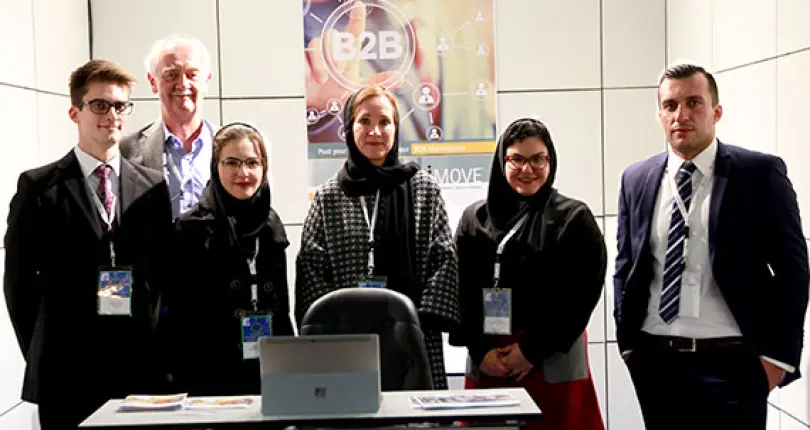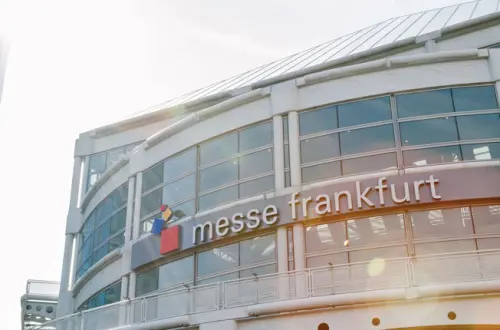Education Technology Iran
The following event we have lined up in our series of events that had every single reason to make it big, but ultimately saw their potential cut short is the Education Technology Iran. The earliest mention we have of this exhibition is in 2016, when it was first announced and took place in early December of that year. The last edition was held in 2017 and that was the end to the plan to host an annual event in support of higher education and training. Education Technology Iran ran for 4 days between December 15th and December 18th in Tehran, Iran at Tehran International Exhibition & Convention Centre and exhibitors could book their space starting November 20th.
The focus of the event fell on showcasing innovations in products and solutions for education and training. This event introduced Iran’s research capabilities and technology centers to international players on the scene, opened communication channels between stakeholders and also provided a collaboration platform between researchers. As far as we know there were no entry fees and the working hours were from 09:00 am in the morning until 18:00 pm in the afternoon. The details we have are only provisionary. We can estimate that the size of the show was modest with exhibitors falling in the diapason between 100 and 500 and visitors within 1000 and 5000.
We also want to stop and talk about the official organiser – Arman Tejarat Diran Co. (ATD). The company is a well-established exhibition organizer that offered the necessary infrastructure and management for organizing full scale exhibition programs in Iran. ATD was responsible for all the tasks and responsibilities associated with the events – communication to publishing, from sales to visitor promotion, from logistics to stand contracting. Trade shows and events organized by ATD have proven to create stimulating environments and business opportunities for multinational, small and medium companies to showcase, promote, and sell their products and services to their clients, while transferring knowledge and expertise. ATD events are the ideal gateway for multinational, small and medium enterprises to expand their businesses into Iran’s rising markets.
This bode initially well for Education Technology Iran, which had billed itself as the first and only international trade exhibition specialized in Education, Research, and Technology in Iran. One of the reasons why the exhibition was free to enter was due to the partnership with Iran’s Ministry of Science Research and Technology. The 2017 of ETI (often the chosen abbreviation for the event) also took the stage with the 18th National Exhibition of Technological and Research Achievements of Iran. This partnership only increased the value sought by players looking to increase their market opportunity by entering Iran.
ETI couldn’t exist even for the short period of time that it did without support from outsider brands that have already been established in the international industry. The first of the two was Didacta – die Bildungsmesse, which holds the great honor of being the largest trade fair for teachers from all education sectors within Europe and the most important continuing education event for the sector. The second was the Global Education Events GmbH (GEE), which offers providers of teaching and learning material community participation in international trade fairs, forums, and congresses. The two leaned in heavily to put everything in order and raise the quality of the exhibition to the strict international standards in an attempt to open Iran to markets outside its region.
However, this involvement didn’t have the impact in the long run. There were many barriers that contributed to the issues with the event – one being the lengthy visa application. Foreigners had to get the approval of the Ministry of Foreign Affairs in Tehran in order to receive a visa code and only then file an application form to the embassy that will then issue visas. Another problem was the requirement to make payments via cash only as paying by card is still not available in Iran. The last problem seemed to do with the language barrier. Although open to foreign partnerships, exhibitors were advised to a translator as foreign languages are not commonly. In this regard, the organisers provided translators when requested ahead of time for a selection of languages.
ETI kept a wide breadth of products on display – administrative software for financial backers and institutions, audio, visual and audio-visual media, author systems, color engineering and interior design, magnetic boards, audio equipment and systems, amplifier boxes, automation technology, blended learning, business process optimization, change management, coaching and many more. ETI had a lot working in its favour, least of all the fact that Iran was the world’s 15th country in science production, up from 20th in 2010, and was expected to climb further with access to modern research equipment and technology.
Yet, ETI only managed to stay on the scene for just about two editions.









